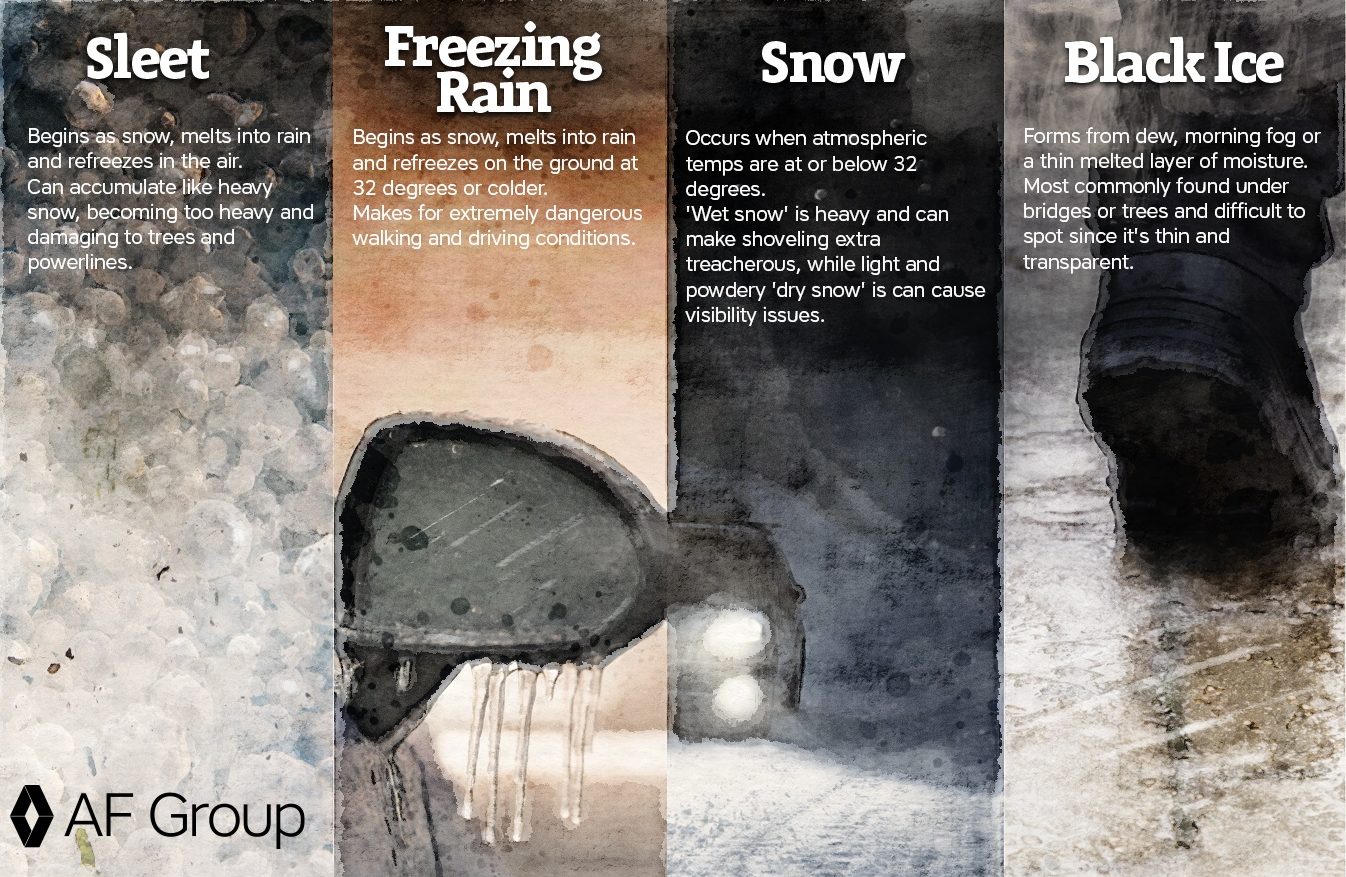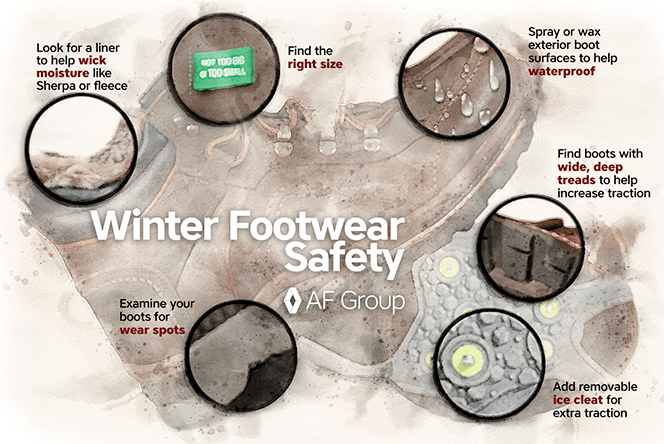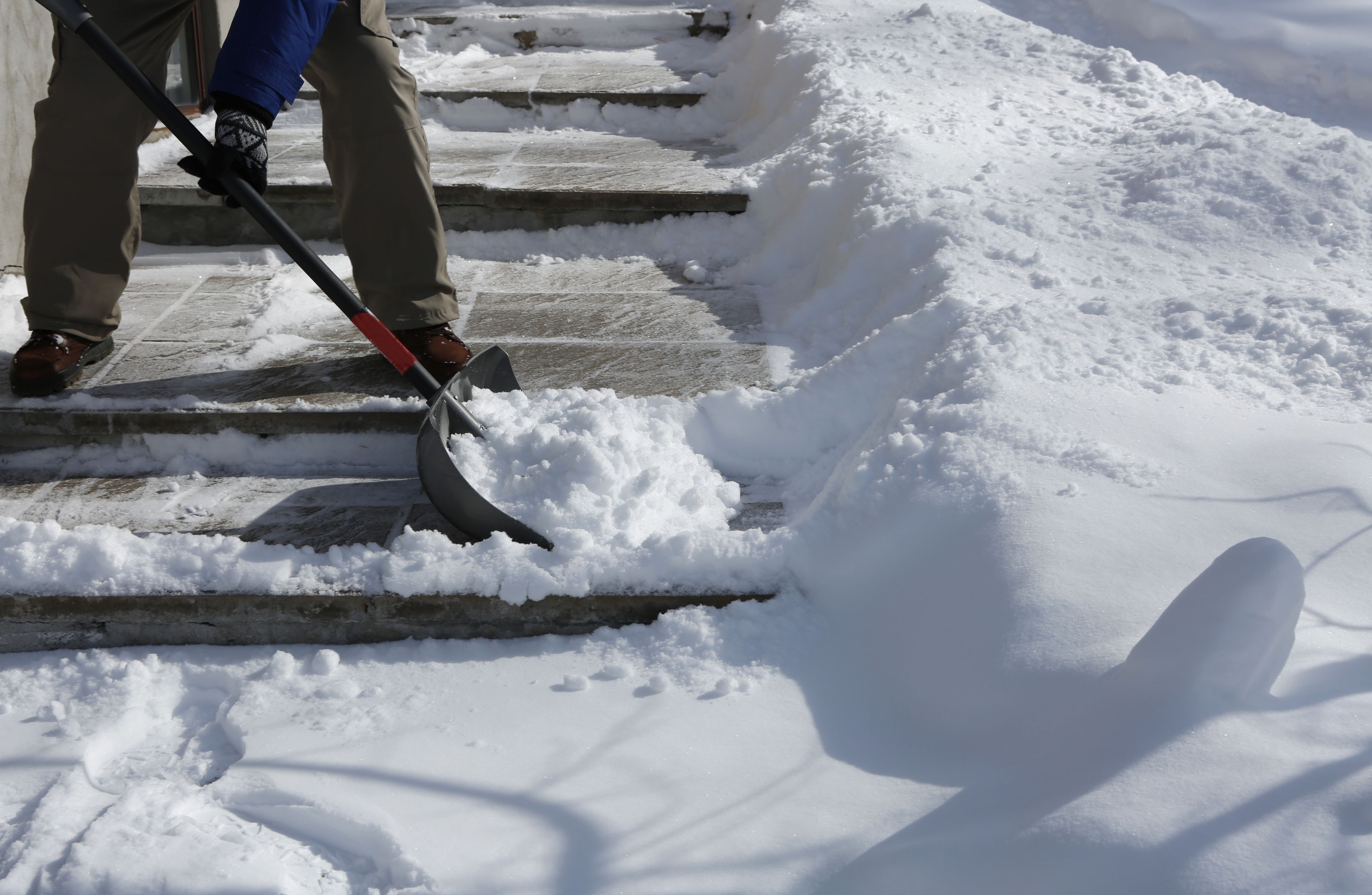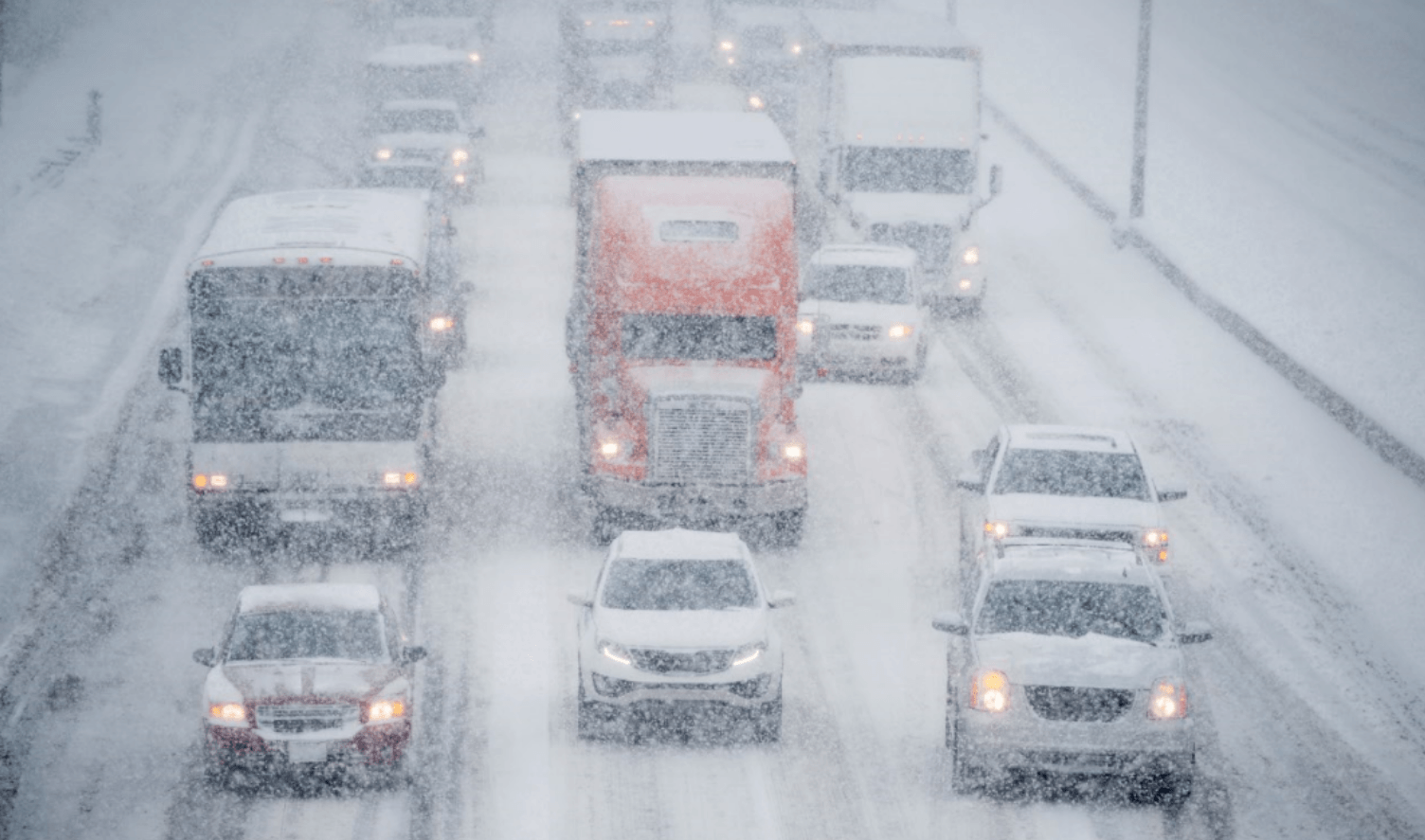Welcome to WalkS.A.F.E.
United Heartland’s winter-weather slip and fall elimination safety campaign.
In addition to the information on this page, visit our Resource Library to find safety articles, eLearnings, printable PDFs, videos and other materials to help you reduce slips, trips and falls throughout the year.
Preparing for Winter Weather
Slips, trips and falls are prevalent when winter weather takes hold — and preparation is the first step in reducing the risk. Before the first snowfall, consider the following:
- Ensure you have access to weather advisory alert systems.
- Tune-up snow blowers and other snow removal equipment or consider hiring a snow removal contractor.
- Make a plan for when off-premise work is necessary.
- Maintain a supply of salt, sand and/or other ice melters.
- Obtain proper footwear (boots, ice cleats, indoor shoes).
- Post slip/trip/fall advisories around the building.
- Ensure entryway mats and housekeeping supplies are on the ready.

PRECIPITATION
While the weather conditions that increase the slipperiness of outdoor surfaces can’t be controlled, slips and falls can be avoided or reduced through careful attention to and maintenance of sidewalks, curbs and parking lots. Let’s start by breaking down the different types of winter precipitation:
Sleet
- Usually begins as snow high in the atmosphere, melts into rain through a small warm band of air and then refreezes into pellets as it passes back into cold air.
- Risks: Sleet pellets bounce as they hit the ground and can accumulate like snow. When this happens, it can become very heavy and cause damage to trees, structures and power lines.
Freezing Rain
- Like sleet, freezing rain also begins as snow, but hits a larger band of warm air, melting into rain until it falls and freezes on the ground. For rain to become freezing rain, surface conditions need to be 32 degrees (freezing point) or below.
- Risks: Freezing rain makes for extremely dangerous walking and driving conditions.
Snow
- When atmospheric temperatures are at or below the freezing point, and no warm bands of air are trapped between the upper atmosphere and the ground, snow is the result.
- Risks: Wet snow is generally very heavy and can make shoveling extra treacherous. Dry snow occurs when the temps are frigid, creating tiny, powdery snowflakes that can easily blow around, causing visibility issues for drivers.
Black Ice
- This thin, transparent layer of ice blends into ground surfaces. It can form from dew or fog in the morning, or in the afternoon when the sun warms up the frozen surface enough to melt a thin layer of moisture that refreezes.
- Risks: Black ice can be found in shaded places like under bridges or trees or in the shadows of buildings. It can sneak up on you when you’re least expecting it.

FOOTWEAR
The right winter footwear is critical to preventing slip and fall accidents on the job. Because of the unpredictable and often treacherous conditions winter can bring, footwear should provide as much stability as possible.
Tips for winter footwear:
- The outsole of the shoe is the area that’s in contact with the walking surface, and the depth and spread of the tread is important. Too closely-patterned treads or those with minimal depth will not allow liquids to be dispersed properly and may create a potential hydroplaning effect.
- Periodically inspect shoe tread and replace shoes when significant wear is noted.
- Find a shoe that fits: a boot that’s too big can cause tripping hazards, but one that’s too tight can cause circulation issues and increase the risk for frostbite.
- Insulation matters — lining made with synthetic fibers to help keep warmth in and cold out is important. Look for materials such as neoprene, Sherpa or fleece.
- Waterproof boots with spray or wax, depending on the material of footwear, to help keep moisture out and toes dry.
- For extra tricky walking surfaces, like hard-packed snow or slick hills, consider using ice cleats over your shoes or boots for extra traction.
- And lastly, consider changing out of boots and into dry footwear when after entering a building to reduce the risk of a slip and fall.
Other important factors to keep in mind when it comes to footwear include usability and cost.

ICE MELT
Protect your team by using ice melt on sidewalks, parking lots and other frequently traveled areas. Always keep ice melt on hand and stock more than you expect you’ll need. Remember, ice-melting products are far cheaper than insurance claims and other costs associated with winter weather slips and falls.
Tips to keep in mind:
- Falls are a liability for business owners.
- Many regulatory bodies have legislation that requires a business to take some action to prevent slips and falls. By doing nothing, business owners open themselves up to legal action.
- Follow directions for ice melt to determining quantity and frequency of use and the proper PPE required during application.
- How quickly de-icers work varies depending on the materials the product is made from and the temperature.
- Tracked-in ice melt can damage floors and other surfaces. Use track mats both inside and outside entrances, and clean up residue throughout the day.

TRAVEL
Driving in winter weather conditions can make for a dangerous situation. Here are a few considerations before you hit the road.
Winterize your vehicle:
- Get a tune-up and be sure to check the battery levels.
- Check radiator coolant and sturdiness of hoses and belts.
- Check for burned out headlights, tail lights and turn signals.
- Check tire tread and wear — minimum tread is 1/16″ for adequate traction.
- Make sure brakes are in proper working order.
- Keep spare window washer fluid in the trunk and make sure the washer blades are in good working condition.
Prepare a winter emergency kit:
- At least two blankets
- Flashlight or battery-powered lantern and extra batteries
- Jumper cables
- Emergency flares
- Extra clothing, particularly boots, hats and mittens
- A steel shovel and rope
- Bottled water or juice and nonperishable snacks (granola bars, raisins, etc.)
- First-aid kit and necessary medications
- Sand or non-clumping cat litter for tire traction for times your vehicle gets stuck in snow or ice

Contact your dedicated United Heartland loss control consultant or visit our resource library for more WalkS.A.F.E. tips, tools and information.
WALKSAFE ResourceS
 WalkS.A.F.E Salt/Sand Shaker Order Form
WalkS.A.F.E Salt/Sand Shaker Order Form WalkS.A.F.E. Walk Like a Penguin Poster
WalkS.A.F.E. Walk Like a Penguin Poster WalkS.A.F.E. Winter Safety Tip Sheet for Remote Workers
WalkS.A.F.E. Winter Safety Tip Sheet for Remote Workers WalkS.A.F.E. Create Your Own Campaign
WalkS.A.F.E. Create Your Own Campaign WalkS.A.F.E. Proper Footwear Poster
WalkS.A.F.E. Proper Footwear Poster Sample Program: Slips, Trips and Falls
Sample Program: Slips, Trips and Falls WalkS.A.F.E. Snow and Ice Removal Log
WalkS.A.F.E. Snow and Ice Removal Log eLearning: Helping You WalkSafe
eLearning: Helping You WalkSafe WalkS.A.F.E. Housekeeping Poster
WalkS.A.F.E. Housekeeping Poster WalkS.A.F.E Housekeeping Guide
WalkS.A.F.E Housekeeping Guide




